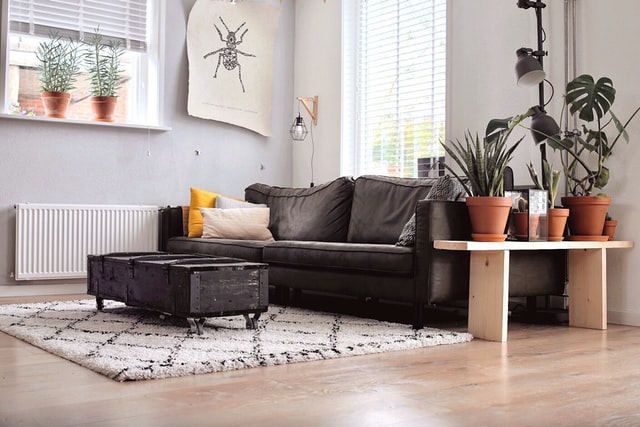Thinking of dressing up your home’s floors? Will you choose carpeting, rugs, or mats? All offer unique advantages, but it’s important to know the differences between them so you can select the option that’s right for you. Just like choosing the colors for your walls and furniture, deciding on the best floor covering option is important for the overall look of your home. Many people indeed use the terms interchangeably, but each term refers to a different type of floor covering.
Carpeting generally refers to wall-to-wall floor covering. It’s often sold in tiles or on rolls and then is installed by professional carpet installers. Today’s commercial carpets are designed with durability in mind. Many are crafted with stain-fighting protections.
On the other hand, rugs are not designed to extend from wall to wall–corner to corner. Therefore, they’re moveable and available in various sizes. Rugs feature a wide range of patterns and designs. Some may boast decorative edges. Some are crafted by highly skilled artisans and are quite valuable.
Mats usually come in sizes smaller than rugs and are designed for high-traffic areas. In this respect, they tend to be more functional than decorative.
In this buying guide, we’ll explain what is meant by carpet, rug, and mat so that you can decide which is best for your needs. Learn about the fabrics used to construct each type of floor covering, how to best care for and clean your carpets, rugs, and mats. Once you know about each, you’ll find it easier to choose between them.
Fabrics for Carpets
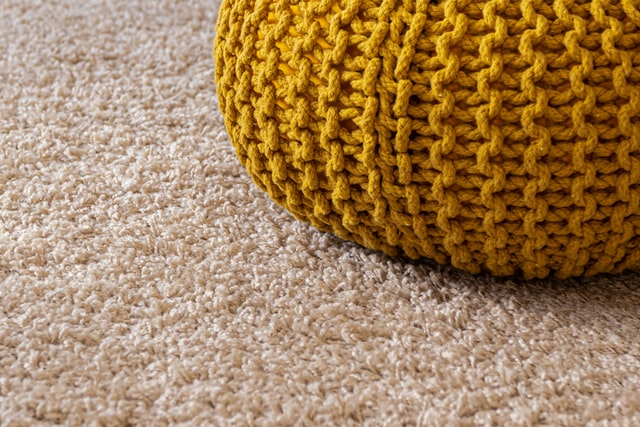
Carpeting is a popular floor covering option, there are some advantages and disadvantages of carpet flooring, so with the information we’ll provide, you can evaluate which is the best option for your needs. Carpets can be found in various fabrics that include:
Nylon
Nylon offers both durability and excellent stain resistance.
The advantages of nylon include:
- Outstanding durability
- Stain resistance
- Natural mold and mildew resistance
The disadvantages of nylon include:
- Stain resistance can vary
- Less eco-friendly than some other options
- May not be as comfortable as some other fabric options (however, there are some soft nylon options to consider)
Nylon Cleaning and Preservation Tips
You can use a wide range of cleaning agents to clean nylon rugs. In fact, nylon is relatively easy to clean, which is why it’s used in roughly half the commercial carpets products by leading manufacturers today. Regular vacuuming helps to prevent dirt from becoming embedded in the carpet fibers.
Olefin
Olefin, also commonly referred to as polypropylene, is frequently used in producing residential carpeting.
The advantages of olefin include:
- Features optimum stain resistance
- Moisture resistant
- Lightweight yet durable
- Resistant to most chemicals
The disadvantages associated with olefin include:
- May not stand up well in high-traffic areas
- Vulnerable to oil-based stains
Olefin Cleaning and Preservation Tips
Because olefin is resistant to most chemicals, it can be cleaned using most detergents. Avoid using heat treatments on olefin and vacuum your carpeting every week to keep dirt and debris from staining fibers.
Polyester
Polyester is a popular carpeting option because of its optimum performance and budget-friendly costs.
The advantages of polyester carpeting include:
- Bleach and fade resistant
- Excellent stain resistance
The disadvantages of polyester carpeting include:
- Vulnerable to oily stains
- Subject to crimp loss, especially in high-traffic areas
Polyester Cleaning and Preservation Tips
Blot up spills quickly and vacuum your polyester carpeting weekly to maintain it. Consider rearranging furniture on your carpeting periodically to alternate traffic areas; this will help reduce crimp loss.
Acrylic
Acrylic is a budget-friendly carpeting fabric, making it popularly used by many carpet manufacturers.
Advantages of acrylic carpets:
- Acrylic is hypoallergenic
- Moth resistant
- Economical option
Disadvantages Of acrylic carpeting
- Poor stain resistance
- Not known for durability and longevity
Acrylic Cleaning and Preservation Tips
Vacuum your acrylic carpeting on a routine basis. Blot stains as quickly as possible. For deep cleaning, you can either buy or rent a steam cleaner or hire professional carpet cleaners to deep clean your carpets.
Wool
Wool is the darling of carpet fibers. Soft yet durable, wool carpets have been used for centuries.
Advantages of wool carpeting
- Strong and resilient (good option for high-traffic areas)
- Hides soiling easily
- Responds well to cleaning
Disadvantages of wool carpets
- More expensive than other fabrics
- Stains easily
- Sensitive to chemicals
Wool Cleaning and Preservation Tips
Keep your wool carpeting looking its best by removing spills quickly and vacuuming regularly. For deep cleaning, annual hot water extraction cleaning is ideal.
Types of Carpets
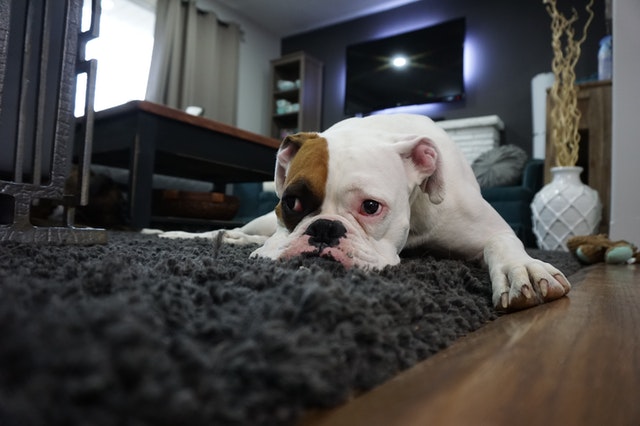
When shopping for new carpeting, you’re likely to encounter various carpet types. Use this guide to choose the best type for your home:
- Cut-loop carpet: this type combines straight and looped fibers to create carpet designs. Their geometric patterns make them popular with decorators, but avoid using them in high-traffic areas as they can become worn out more quickly than other types.
- Loop-pile carpet: loop piles are known for their soft yet durable designs. They are a good choice for high-traffic areas.
- Shag carpet: with their deep pile, shag rugs are known for their plush softness. Keep in mind shag is more challenging to clean than other carpet types.
- Plush pile: as the name suggests, plush pile carpeting is soft–very soft. It’s ideal for living rooms and bedrooms.
Fabrics for Rugs

When shopping for rugs, expect to find a dizzying array. You’re most likely to encounter rugs made from the following fabrics:
Silk
Silk rugs are celebrated for their beauty and craftsmanship. The downside: they can be difficult to clean and are quite expensive. To keep your silk rugs looking their best, avoid abrasive cleaners and steam cleaning. Vacuum your silk rug regularly and spot clean stains.
Cotton
Cotton rugs are a popular option because they’re easy to clean, often reversible, and are less expensive than many other options. Unfortunately, cotton rugs don’t lay flat easily (you may need carpet tape) and can stain easily. Wash your cotton rugs to maintain their clean appearance and blot spills quickly to help reduce staining.
Sisal, Jute, and Seagrass
Rugs made from sisal, jute, and seagrass are highly durable, which makes them an excellent option for high-traffic areas of your home. The disadvantage of these fibers is that they’re not as comfortable underfoot as some other options. To clean your jute, sisal, or seagrass rugs, shake them out and vacuum regularly. Avoid saturating them with water because the fibers are absorbent. For deep cleaning, use a dry cleaning powder and vacuum.
Faux Fur and Vegan
Faux fur and vegan rugs are popular options because of their soft textures. These rugs are ideal for people who live a vegan lifestyle and have a vegan and cruelty-free home and are excellent options for baby nurseries and bedrooms. Faux fur rugs are cheaper than fur rugs and, of course, involve no animal cruelty. The downside is that these rugs aren’t as soft as some other options and are not necessarily eco-friendly. To clean these rugs, follow the manufacturer’s instructions carefully.
Organic / Non-Toxic Materials
Rugs made with organic and non-toxic materials are generally ideal for non-toxic baby nurseries and children’s bedrooms. Nevertheless, investigate each natural fiber/material to ensure it’s the right option for you, organic cotton and bamboo fibers are great options. Your cleaning methods may also vary depending on the materials in question.
Types of Rugs
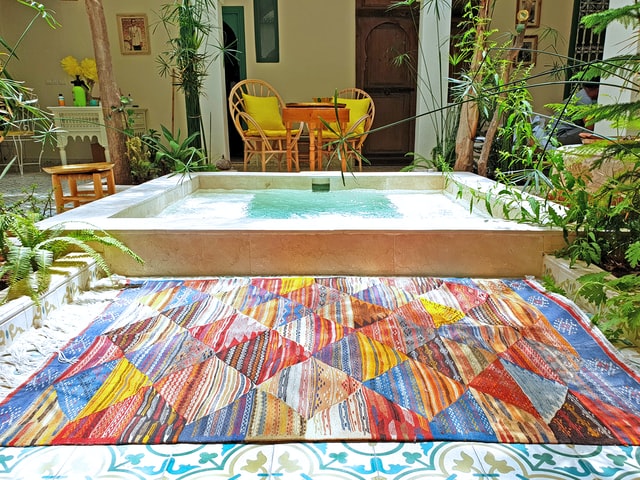
When rug shopping, you can expect to encounter the following rug types:
- Hand-knotted: referred to as Oriental rugs (or Iranian/Persian rugs), hand-knotted rugs are celebrated for their artistry and durability. They’re perfect for showcasing in your favorite room. Many hand-knotted rugs have been known to last for centuries.
- Handloom rugs: handloom rugs are woven on looms by hand, an example of this type of rug is Tibetan rugs, which is a type of folk art. May provide the look of a hand-knotted rug but are less expensive (and maybe less durable too)
- Hand-tufted rugs: these rugs are made in part by hand and using a mechanized tool. These are more cheaply made rugs and do not boast the same durability as hand-knotted rugs.
- Flatweave: flatweave rugs feature a flatter design than pile rugs; consequently, they pose a reduced tripping hazard. This makes them an excellent option for foyers and high-traffic areas.
- Antique rugs: Also referred to this type as vintage rugs or tapestries, they are great to create a unique and one of a kind space, since antique rugs often come in unusual combinations of colors and sizes, which gives you the opportunity to create your own style in any room of your home.
Mats
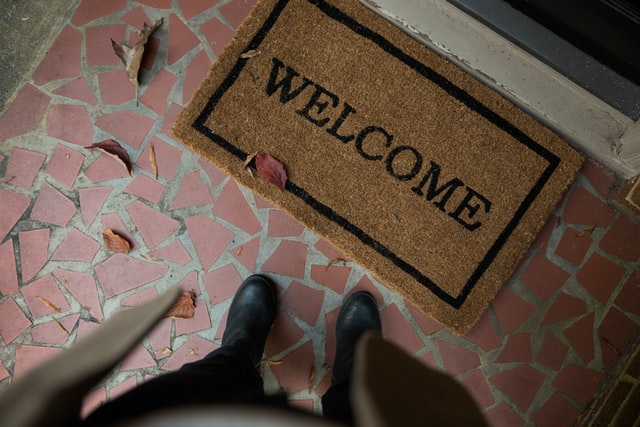
Mats are suitable floor coverings for high traffic areas near home entrances, for example, or mudrooms. You can expect to find them made from the following materials:
Rubber
Rubber mats are incredibly durable and both water and stain-resistant. Rubber also boasts natural antimicrobial resistance, making it a good choice for kids’ rooms. The downside of rubber is that it tends to be more expensive than many mat options. Be careful which detergents you use; though generally stain-resistant, some detergents will cause staining.
Vinyl
Vinyl is very diverse, so you’re apt to find a wide array of mat styles. Vinyl is durable, so it’s well suited to high-traffic areas like kitchens and foyers. Because it’s waterproof, it’s easy to keep clean too. It’s a great option for homes with pets.
Memory Foam
These mats come in a wide range of designs and are especially popular for kids’ rooms. While less expensive than rubber, they’re not as durable either. Avoid using hot water to clean memory foam mats.
Carpet Fiber
Carpet fiber mats feature carpeting, often a flatweave layer, above a rubber or vinyl base. These rugs offer the comfort of carpeting with the added durability of their base material. They may be more expensive and also more challenging to keep clean. Vacuum regularly and follow the manufacturer’s care tips.
Anti-Slip
Anti-slip mats are designed more for function than fashion. Many people employ them in workspaces for slippery. They’re generally easy to keep clean with mild soap and water.
Types of Mats
When shopping for mats, you’re likely to encounter:
- Doormats: these mats are made from durable materials in order to stand up to heavy foot traffic.
- Bathroom mats: mats designed for the bathroom are typically made with a rubber or vinyl base to reduce the risk of mold and mildew. Look for easy-to-clean mats you can launder in your washing machine.
Keep this guide handy, so you can refer to it as needed when shopping for carpeting, rugs, or mats for your home.

